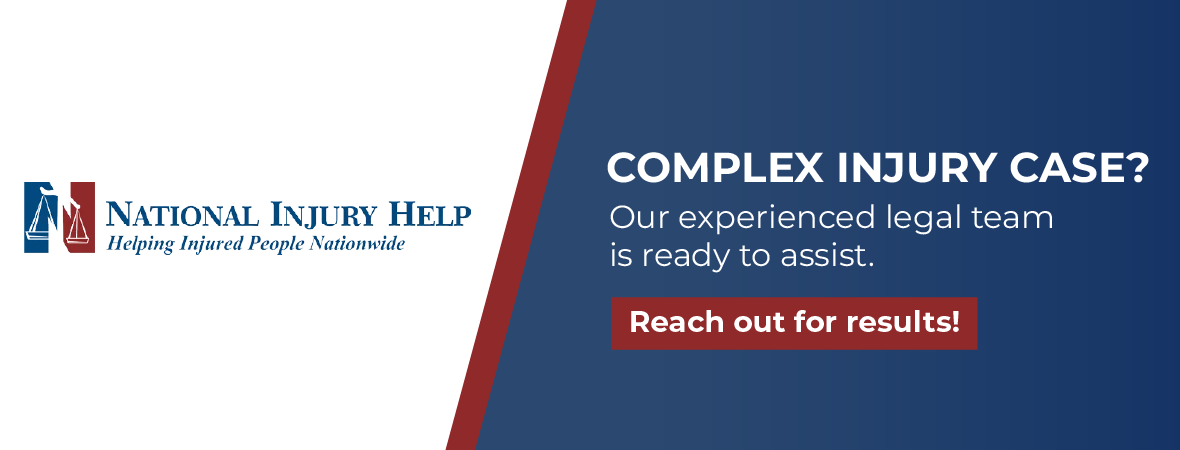Wondering how much your case is worth? This article explains what goes into calculating a settlement, from medical costs to pain and suffering. Do not settle for less than you deserve. Contact National Injury Help to make sure every dollar is accounted for. We fight for full and fair compensation.
A car crash, slip, or faulty product can flip your life upside down in moments. Suddenly, you’re juggling doctor visits, missing work, and worrying about how to pay the bills. Personal injury compensation helps cover those losses so that you can focus on healing, not debt.
Because laws vary from state to state, there’s no single rulebook for all injury cases in the U.S. Each state sets its particular deadlines and rules about fault and compensation amounts. Still, the core principles are similar enough that once you understand the basics, you can adjust for your location.
This guide breaks down the compensation rules in personal injury cases, explains what affects the value of your claim, and outlines each step in the process. By the end, you’ll know what qualifies as compensation, how settlements work, and when it’s smart to call a lawyer.
What Counts as Personal Injury Compensation in the U.S.?
When you hear lawyers talk about “damages” in a personal injury case, they’re talking about the money you may be entitled to after being hurt because of someone else’s actions. Damages are grouped into different types based on what kind of losses you’re dealing with. Think of them as categories that capture all the ways an injury has disrupted your life.
Economic Damages
One of the most common personal injury settlement types is called economic damages, sometimes referred to as ‘‘special damages’’. These are the losses you can easily measure and prove with bills, receipts, and pay stubs.
For example, if you ended up in the emergency room or needed physical therapy afterward, those medical bills count. If you missed work and lost income, or if you can’t return to the same job and will lose future earnings, that’s included too.
Even everyday things like the cost of repairing your car, replacing your broken glasses, or fixing your wheelchair can be covered under economic damages. If you can add it up on a calculator, it likely fits here.
Non-Economic Damages
Then there are non-economic damages, also known as ‘‘general damages’’. These cover the emotional and personal impact of the injury, the things you feel rather than pay for.
That includes pain and suffering damages (physical pain that lingers, emotional distress like anxiety or depression), and even the loss of joy in doing the things you once loved, like hiking, cooking, or playing with your kids. Scarring or permanent disabilities also fall into this category, especially when they change how others see or treat you.
Punitive Damages
The third type is punitive damages. These don’t have anything to do with your medical bills or your pain. Instead, they’re meant to punish the wrongdoer when their behavior is especially reckless or intentional. For example, a drunk driver speeding through a school zone, a company that hides a serious product defect, or a nursing home worker who deliberately hurts a resident, these are the kinds of cases where a court might award punitive damages. They’re not common, but when they apply, they send a strong message: this kind of behavior won’t be tolerated.
To put it simply:
- Economic damages are the costs you can prove.
- Non-economic damages are how the injury changed your life.
- Punitive damages are the court’s way of saying, “That was outrageous, and it won’t go unpunished.”
Together, these categories help paint the full picture of what your injury has cost you and what you may be owed in return.
Laws That Determine Your Final Injury Settlement Amount
Because each state writes its own statutes, two identical injuries can lead to very different checks depending on where they happen. Four rules matter most:
- Comparative Negligence: Most states use modified comparative negligence; if you are 50 % or 51 % at fault (the exact cutoff varies), you get nothing. Roughly a dozen states, including California and New York, follow pure comparative negligence, meaning you can be 99 % at fault and still recover 1 % of your damages. A handful, such as Virginia and North Carolina, still rely on old-style contributory negligence, where any fault bars recovery entirely.
- Damage Caps: Some states place a ceiling on non-economic damages or punitive damages, especially in medical-malpractice cases. For example, Florida recently removed most caps, while Texas limits non-economic damages in malpractice to $250,000 against doctors and $500,000 against hospitals.
- Statute of Limitations: You must sue before a deadline or lose the claim forever. The clock typically runs two to three years from the date of injury, but it can be as short as one year (Louisiana) or as long as six years (Maine). Special rules apply to minors, government entities, and injuries discovered later.
- Minimum Insurance Requirements: Every state except New Hampshire mandates liability insurance for drivers, yet minimums vary: some require only 15/30/5 ($15,000 per person, $30,000 per crash, $5,000 property damage), while others demand 50/100/50. Commercial trucks, rideshare vehicles, and certain businesses carry much higher limits, which can push settlements well beyond typical numbers.
Six Factors That Affect Your Settlement
The six major factors that will determine your final compensation are:
- Injury Severity: Bruises heal; brain injuries don’t. The longer the treatment lasts, and the more your life changes, the bigger the price tag.
- Percentage of Fault: Evidence such as traffic-camera video, skid-mark measurements, or witness statements can shift the blame scale and directly change your payout.
- Insurance Limits & Assets: You cannot collect money that doesn’t exist. If the at-fault party has low coverage and no significant assets, your recovery may hit a wall unless multiple defendants share blame.
- Documentation Quality: Insurance adjusters work from paper and pixels, not sympathy. Photos, medical records, pay stubs, and journal entries that track pain days provide leverage.
- Legal Representation: Studies by the Insurance Research Council consistently show that claimants with attorneys receive several times more on average, even after attorney fees, than those who go it alone.
- Location & Jury Attitudes: A conservative rural county might award lower non-economic damages than a metropolitan area where juries see catastrophic injuries more often. Insurers keep spreadsheets of verdict trends and factor those into offers.
Frequently Asked Questions
Can I handle the claim myself?
Yes, but expect steep learning curves. Adjusters are trained negotiators. They know that time pressures and unfamiliar legal language push many unrepresented claimants to accept the first offer. If medical bills, future wage loss, or permanent injury are on the table, professional help nearly always nets more.
What if I were partly at fault?
Check your state’s comparative fault rule. Even in contributory-negligence states, there are niche exceptions, so never assume you are ineligible until you ask a lawyer.
Do I have to pay taxes on my settlement?
Under IRS Section 104(a)(2), compensation for physical injuries is generally not taxed. However, punitive damages and interest are taxable. Always confirm with a tax professional.
How much does a lawyer cost up front?
Zero in most cases. Typical contingency fees range from 33 % of a pre-suit settlement to 40 % if a lawsuit is filed, but rates vary by region and case complexity.
Contact a Personal Injury Lawyer
Time is a limited resource after an accident. Evidence fades, medical bills grow, and strict filing deadlines approach fast.
Reach out to National Injury Help today by calling 1 (800) 214-1010 for a free case review. We will explain your options, calculate a fair settlement target, and fight for every dollar you deserve while you focus on healing. One call can protect your rights and pave the way to a stronger financial recovery.







